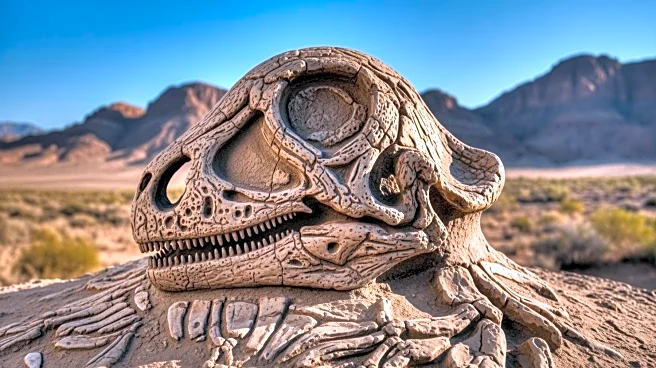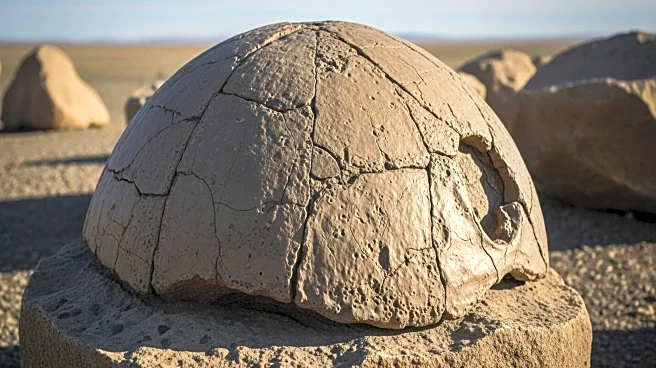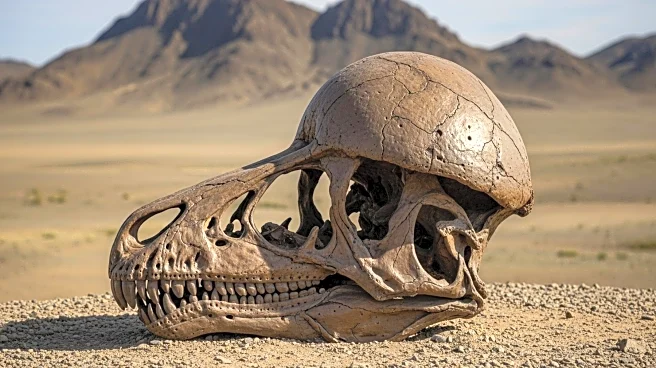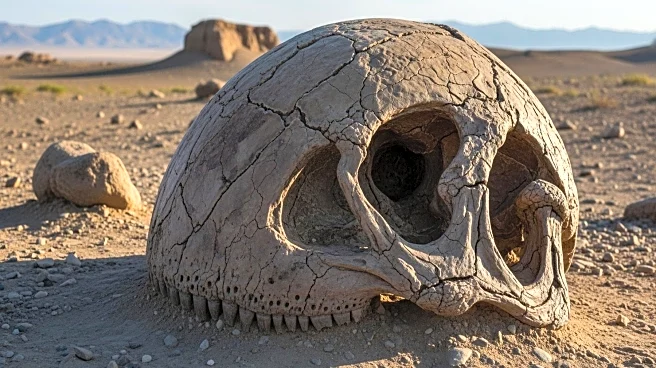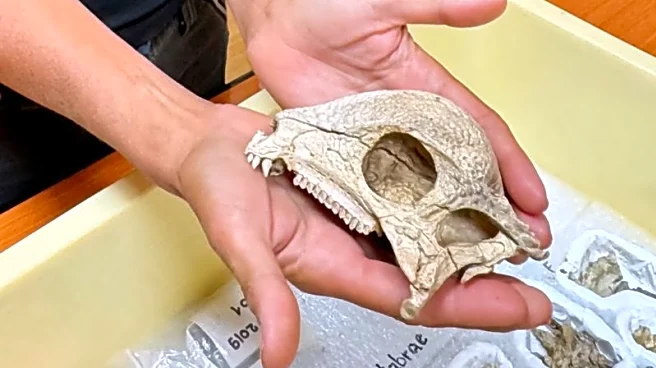What's Happening?
A team of scientists led by Tsogtbaatar Chinzorig from the Mongolian Academy of Sciences has discovered the oldest and most complete fossil of a pachycephalosaur in Mongolia's Gobi Desert. This juvenile fossil, named Zavacephale rinpoche, dates back 108 to 115 million years and provides significant insights into the anatomy of these enigmatic dinosaurs. Pachycephalosaurs, known for their dome-shaped skulls, were two-legged herbivores that lived during the Cretaceous period in Asia and North America. The newly discovered fossil is more skeletally complete than previous finds, featuring long legs, short arms, small hands, and gastroliths used for grinding vegetation. The discovery sheds light on the development of the pachycephalosaur's cranial dome, which remains a subject of scientific curiosity.
Why It's Important?
The discovery of the Zavacephale rinpoche fossil is crucial for understanding the evolutionary history of pachycephalosaurs. As the oldest known specimen, it provides valuable information on the early characteristics and development of these dinosaurs, particularly their distinctive cranial dome. This find helps scientists trace the evolutionary changes in pachycephalosaurs over time, offering insights into their behavior and ecological adaptations. The completeness of the fossil allows researchers to study aspects of pachycephalosaur anatomy that were previously unknown, potentially influencing theories about their social behavior and mating rituals.
What's Next?
Researchers will continue to analyze the Zavacephale rinpoche fossil to uncover more details about pachycephalosaur anatomy and behavior. Further studies may focus on the purpose of the dome-shaped skull, exploring hypotheses such as its use in combat or mating displays. The fossil's age also opens new avenues for research into the evolutionary timeline of pachycephalosaurs, potentially leading to discoveries about other early dinosaur species. Collaborative efforts between paleontologists and institutions may result in more comprehensive studies and publications, enhancing our understanding of dinosaur evolution.
Beyond the Headlines
The discovery of the Zavacephale rinpoche fossil highlights the importance of paleontological research in Mongolia, a region rich in dinosaur fossils. It underscores the potential for future discoveries that could reshape our understanding of prehistoric life. The find also raises questions about the ecological conditions of the Cretaceous period, prompting further investigation into the environmental factors that influenced dinosaur evolution. Additionally, the fossil's media coverage may increase public interest in paleontology, encouraging educational initiatives and museum exhibitions focused on dinosaur research.

